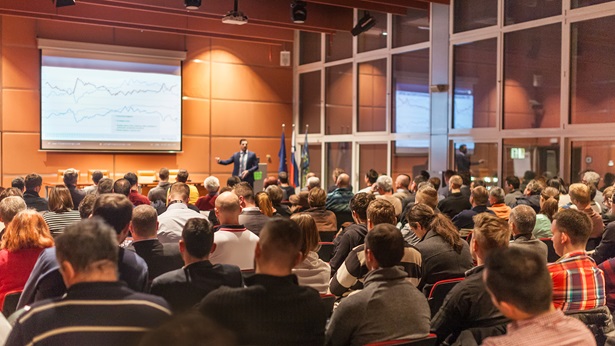EPA Finalizes 2017 Construction General Permit
The 2017 EPA Construction General Permit
On Jan. 11, 2017, EPA issued the 2017 Construction General Permit (CGP). The 2017 CGP took effect on midnight Feb. 16 and will stay active for five years.
Although only applicable in New Mexico, Idaho, Massachusetts, and New Hampshire, as well as Puerto Rico and the District of Columbia, the EPA CGP serves as a model for most other states when they develop their own stormwater permitting requirements under the federal Clean Water Act.
Both developers and builders must seek coverage under the CGP for construction that disturbs more than one acre, or less than one acre within a larger common plan of development, such as an individual builder constructing a home on a single building lot(s) within a residential subdivision.
Modification of the 2017 CGP
EPA modified the 2017 CGP on June 27, 2019, in response to a petition from NAHB. EPA modified the CGP to clarify individual operator responsibilities in multiple operator scenarios, remove references to “joint and several liability” from the CGP, and revise three requirements more closely with the Construction and Development Effluent Guideline (ELG) text.
Background
NAHB submitted detailed comments on EPA’s 2017 draft CGP on May 26, 2016.
HBAs from four states testified directly to EPA about their concerns. NAHB received over 30 comments from individual members and worked closely with EPA to communicate a more detailed industry response to this proposal. NAHB Land Development and Environmental Issues Committee members met to discuss problems in detail and propose solutions.
NAHB also met with OMB to represent construction industry concerns. This conversation focused on potential costs of new expanded liability provisions under this permit (see below).
Good News – Wins for Builders
- EPA acknowledged, for the first time, that individual details of a stormwater pollution prevention plan (SWPPP) are not directly enforceable. Thanks to new clarifying language, Section 7 of the CGP emphasizes that SWPPPs are intended to serve as a flexible “external tool” to carry out permit responsibilities and that the SWPPP itself does not create new permit terms or conditions or, “establish the effluent limits that apply to your site’s discharges.” NAHB is very satisfied that EPA listened to builders’ concerns, clarifying years of confusion in the field over whether individual specifications in a SWPPP create or equate to permit limits. SWPPP documents must still meet minimum criteria and be updated regularly to reflect changing site conditions.
- EPA will not require builders to publish SWPPPs publicly online. NAHB members explained in detail the many costs and risks associated with uploading large, complex documents containing detailed site data without a proper system for screening confidential business information. In response, the new CGP retains the public transparency provisions of the 2012 permit: Builders must store a copy of their SWPPP onsite and be prepared to pass on to EPA for public inspection upon request.
- EPA dropped plans to require “joint” SWPPPs for builders within the same common plan of development. Again, EPA was reasonable on this issue, listening to case studies presented from the New Mexico HBA and other NAHB affiliates who showed how coordinating site compliance documents among multiple firms for months, even years, would be next to impossible.
- EPA withdrew new confusing additions to the Notice of Intent (NOI) compliance form. Additions asking builders to identify multiple outfall latitudes and longitudes as well as acres of impervious surface were removed.
Major Changes to Liability for Sites with Multiple Operators
Expanded liability provision poses problems for builders on sites with multiple operators. Despite protest from NAHB and other industry groups, EPA introduced controversial language in the 2017 CGP that considers all builders on shared sites “jointly and severely liable” for compliance with permit terms, including failures of “shared” treatment ponds and other features receiving flow from multiple properties. As described above, EPA has modified this liability language to address NAHB’s concerns.
Other Changes
Operators must post a sign or notice informing the public on how to contact EPA to obtain a copy of the SWPPP, and how to contact EPA if stormwater pollution is observed.
- There are tighter stabilization timelines for sites that disturb more than 5 acres at once. EPA heeded calls by environmental groups to further restrict timelines by incentivizing larger sites to phase their operations. Those sites disturbing more than 5 acres at once must adhere to a stricter seven-day (rather than 14-day) stabilization schedule.
- Operators still have the option to either conduct a site inspection once every seven calendar days or once every 14 days and within 24 hours of the occurrence of a storm event of 0.25 inches or greater. New is a provision requiring those operators choosing the 14-day timeline to inspect after occurrence of runoff from snowmelt “sufficient to cause a discharge.”
- There is now a prohibition against non-stormwater discharges of external building washdown waters containing hazardous substances, such as paint or caulk containing polychlorinated biphenyls (PCBs).
- There are requirements for cover or “other appropriate temporary stabilization” for all inactive piles that will be unused for 14 or more days.
- Waste container lids must be closed at the end of the business day. For those containers that do not have lids, operators must provide cover or “similarly effective means” to minimize discharge of pollutants.
- For sites discharging to PCB-impaired waters, operators must minimize the exposure of any building materials containing PCBs to precipitation and stormwater.
NAHB will continue to analyze the new permit and report on any developments.
Resources
NAHB Final Comments: EPA’s Proposed 2017 CGP
EPA’s 2017 Construction General Permit and Related Documents



